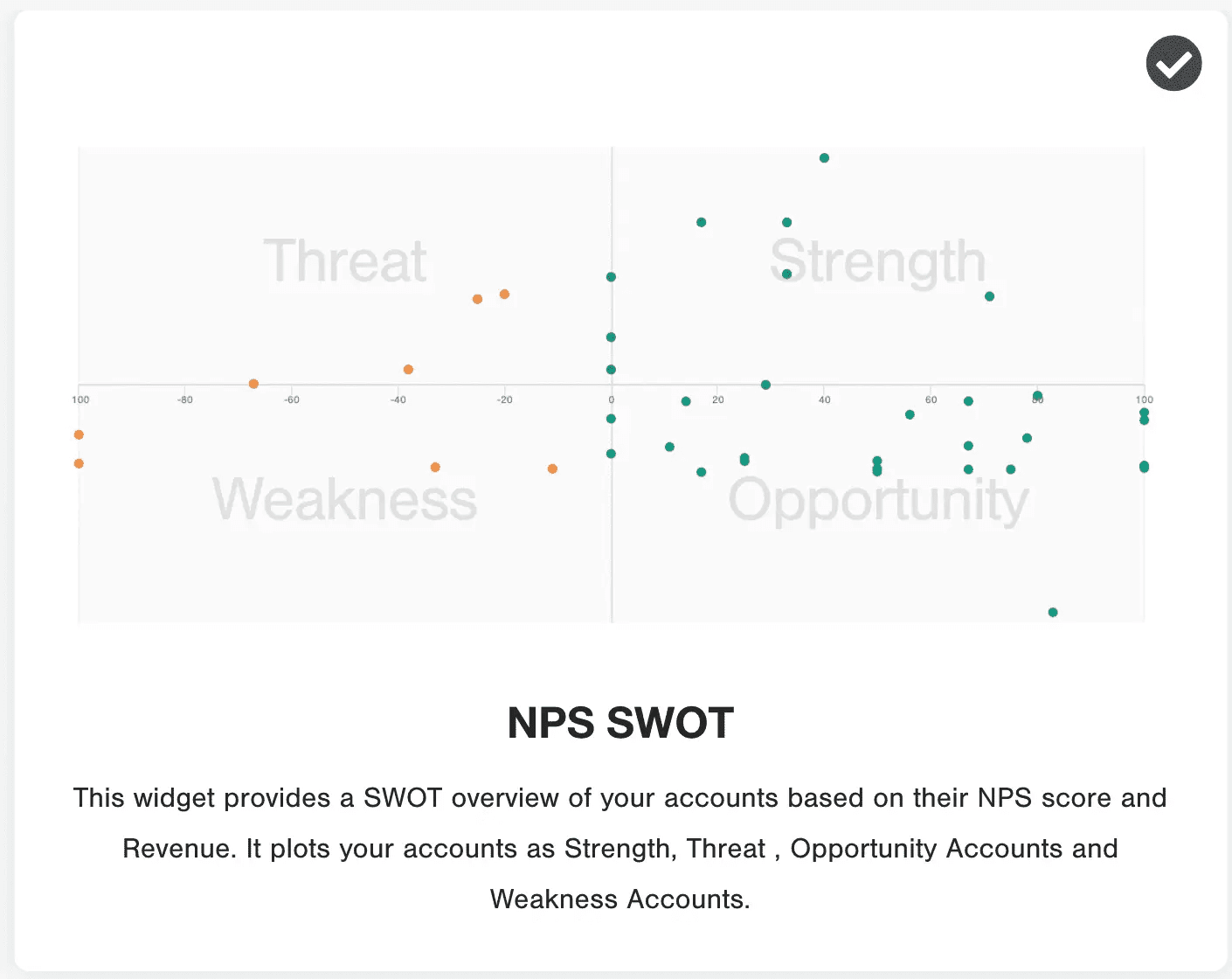Whenever we onboard a new sales person here at CustomerGauge, we have them go through a bit of a ritual: After about a week with the company, they’re asked to present on what they think we do here at the company as well as what they’ve learned so far about the Net Promoter Score® and Net Promoter System®.
Now, for the most part, these are supposed to be silly.
Some people talk about internet cats others give their presentation purely in memes. However, about a year ago, one sales person gave a presentation where they discussed NPS as a mirror where companies can see the true reflection of themselves.
In a lot of ways, an NPS SWOT chart does just that. It shows you the blemishes and smooth lines of your Strengths, Weaknesses, Opportunities and Threats among your customers.
In this article, we’ll look at how B2B companies can use NPS SWOT analysis to dig deep into those accounts that offer opportunities for revenue growth, revenue loss and everything in between using the research from our most recent white paper.
What Is SWOT Analysis?
Before we dive into NPS SWOT analysis, we must also discuss general SWOT analysis. SWOT analysis is used by businesses to identify their strengths, weaknesses, opportunities and threats. It is also used to analyze what a business can do (or cannot do) to improve upon these factors.
“Using environmental data to evaluate the position of a company, a SWOT analysis determines what assists the firm in accomplishing its objectives, and what obstacles must be overcome or minimized to achieve desired results: where the organization is today, and where it may be positioned in the future.” – Investopedia
Big companies, such as Amazon, could use such a technique to analyze best courses of action for their business.
NPS SWOT: Account Management at Its Finest
NPS SWOT is a bit different than your typical SWOT analysis.
NPS SWOT is a simple scatter chart of accounts, products, or any other customer segmentation. Each segment has a Net Promoter Score, a financial value (e.g. revenue, profit or customer lifetime value) and falls into one of four quadrants: Strengths, Weaknesses, Opportunities or Threats.
NPS SWOT for Account Deep Dive
Below is a sample NPS SWOT chart in the CustomerGauge system, where the y-axis shows revenue and the x-axis shows NPS.
As shown in the below example, an NPS SWOT chart is built for B2B companies who want to look at the different accounts. In addition to showing the revenue breakdown of each account in the sidebar, along with the collective NPS score, we also see the average collective NPS of the whole chart.
An NPS SWOT chart allows you to identify:
- Which customers are at risk of detracting
- What revenue is lost to detractors
- How to monetize passives and promoters
By clicking on the dots on the screen, companies can dig deeper into both the revenue and NPS of the company.
B2B companies can deep dive into these accounts further to look at the reasons behind an account's NPS scores for the various contacts within that account.
NPS SWOT for NPS Score Deep Dive
While not shown in the previous screenshot, another tab on this same screen exists where you can also show the top reasons for an NPS score charted in the SWOT analysis. Below we have another example:

In this type of NPS SWOT chart example, the segments are defined as follows:
- Strengths These are the most valuable products that customers love. Sell them into new markets, help customers to refer them to friends or colleagues and utilize the customers to build, test and market new products. It is crucial to understand the promotion drivers to copy success to other existing products or when building new products.
- Weaknesses Products that generate little value and customers dislike don’t belong in a product catalog. The road to growth goes through higher Net Promoter Scores, which bears a cost. Consider selling the product lines to other companies. Alternatively, close them down.
- Opportunities Popular products that don’t generate much value may be new products or just on your shelf to complete a product portfolio. Utilize the learning from the Strengths quadrant to grow sales. Also, incentivize customers to refer the products or utilize the promotion in other ways. Growth and profitability are key to any initiatives.
- Threats If detraction drivers are not product-related quickly fix them. Otherwise, launch initiatives to move customers from these products to other products. For example, Nokia phones after the introduction of the smartphone—they still generate considerable revenue but their popularity is gone and soon their revenue will be too.
NPS SWOT is a great way for companies to identify opportunities for growth within their NPS and CX program. Correlating revenue with your NPS program is a vital step in the Monetized Net Promoter methodology.
If you’d like to learn more about the 4 steps to Monetized Net Promoter®, including the use of NPS SWOT in tying revenue to CX, click below.


